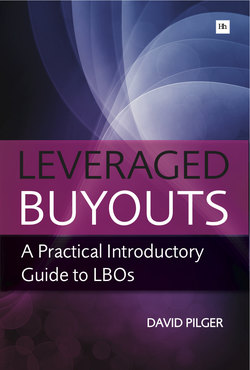Читать книгу Leveraged Buyouts - David Pilger - Страница 14
На сайте Литреса книга снята с продажи.
Positive outcome
ОглавлениеNow that the leveraged buyout transaction has been completed the hard work begins for those tasked with the job of running the business and ultimately generating earnings. Business managers will focus on operating efficiency and try to identify areas within the company where unnecessary costs can be reduced. They will also try to identify additional revenue-generating opportunities.
The economy continues to grow and businesses are shipping goods by train as much as ever. The company experiences growth in demand for its train engine parts by 5% every year for the next five years. Under these circumstances, the company is able to meet is regular interest payments and realize a return on equity.
As time goes on, the company continues its profitable ways, steadily paying down debt and using its profits to expand operations, which will result in greater revenues and ultimately profits down the road. The company also increases the dividends paid out to owners.
Five years after the original acquisition of the company, our investor decides that he is ready to sell the company. At this point, significant value has been created within the company. Business operations have expanded, and with it, revenue and earnings have also increased. The firm has generated significant positive cash flows that have been used to expand the business and pay the owners, in the form of dividends.
Using the same methodology that was used to value the purchase of the company, the investor is now selling the company at a price that will result in a handsome return on investment. With a large portion of the debt now paid down and turned into equity, our investor is selling a considerably larger portion of the company as equity than he actually bought on the day of purchase. That coupled with the fact that earnings have also grown over the past five years contributes to the returns that the investor expects to realize.
“Five years later, if a large portion of the debt is paid down and turned into equity, an investor can sell a considerably larger portion of the company as equity than he actually bought on the day of purchase.”
In the end, our investor identifies a buyer that is willing to purchase the company at the same multiple of EBITDA he purchased the company at. It doesn’t sound very exciting at first, but the key facts are that the company’s EBITDA has grown 30% over the past five years and while our investor only put up 10% of the purchase price in the form of an initial equity investment, his equity share now accounts for 40% of the company’s capital structure. The short summary of this positive outcome is that our investor has made a lot of money on this deal by increasing the company’s earnings (EBITDA), paying down debt and amassing a larger portion of shareholders’ equity in the firm over time.
